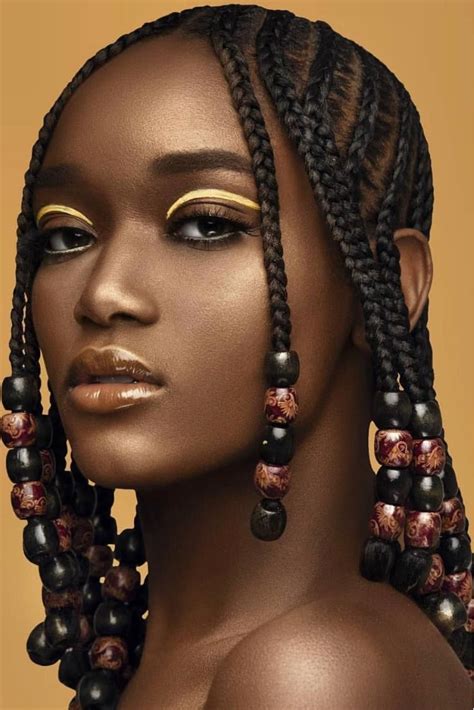Introduction

Black people haircuts have evolved over time, showcasing a rich tapestry of creativity, culture, and personal expression. From traditional African styles to modern trends, black people haircuts are a reflection of the unique beauty, heritage, and resilience of the black community.
Historical Context
In pre-colonial Africa, hair held significant cultural and spiritual meanings. Hairstyles varied from tribe to tribe, symbolizing status, age, marital status, and religious beliefs. Braids, cornrows, and intricate patterns were common hairstyles, often adorned with beads, shells, and other embellishments.
The Diaspora and the Evolution of Black Haircuts
As African people were forcibly taken into slavery and dispersed across the globe, their hairstyles underwent changes and adaptations. In the Americas, black women were often forced to cut their hair short for hygiene and practicality. However, they also found ways to resist this oppression, using their hairstyles to communicate and express their identities.
The Natural Hair Movement
The 1960s and 70s marked a resurgence of pride in black identity and culture. The Natural Hair Movement embraced black hair in its natural state, challenging Eurocentric beauty standards. Hairstyles such as afros, dreadlocks, and braids became symbols of liberation and self-acceptance.
Modern Black Haircuts
Today, black people haircuts continue to evolve, blending traditional and modern elements. Fade haircuts, box braids, locs, and natural styles are just a few of the myriad of styles that showcase the diversity and creativity of the black hair experience.
Pain Points and Motivations
Pain Points
- Discrimination and bias against black hair in society and the workplace
- Difficulty finding hairstylists who are skilled in cutting and styling black hair
- Limited representation of black people in beauty and fashion media
Motivations
- Desire to embrace and celebrate black identity
- Resistance to stereotypes and Eurocentric beauty norms
- Empowerment through personal expression
- Promotion of representation and visibility
Effective Strategies
Strategies for Addressing Pain Points
- Educate the public and employers about the history and cultural significance of black hairstyles
- Support organizations that train and certify hairstylists specializing in black hair
- Advocate for representation of black hair in beauty and fashion industries
Strategies for Empowerment
- Embrace the versatility and beauty of black hair
- Explore a wide range of hairstyles that reflect personal style and cultural heritage
- Share stories and experiences to promote understanding and appreciation
Tips and Tricks
Tips for Styling Black Hair
- Use moisturizing and nourishing products to keep hair healthy and hydrated
- Experiment with different braiding and twisting techniques to create unique looks
- Protect hair from damage by using heat protectants and styling tools with care
- Accessorize hairstyles with beads, clips, and other embellishments to add flair
Tricks for Maintaining Black Hair Health
- Wash hair regularly with a gentle shampoo and conditioner
- Deep condition hair weekly to restore moisture and nutrients
- Trim split ends regularly to prevent breakage
- Avoid harsh chemicals and excessive heat to preserve hair health
Market Analysis
The black hair care industry is a rapidly growing segment of the beauty market. According to the Nielsen Company, black women spend approximately $480 million annually on hair care products. This growth is attributed to the increasing awareness and acceptance of black hair in society, as well as the rising purchasing power of the black community.
Table 1: Popular Black Hairstyles
| Hairstyle | Description |
|---|---|
| Afro | A full, rounded hairstyle created by combing or picking out natural hair |
| Box Braids | Long, square-shaped braids created by sectioning hair and cornrowing it tightly |
| Dreadlocks | Long, matted strands of hair formed naturally or through a process called “dreading” |
| Fade Haircut | A haircut in which the hair is gradually faded from short at the sides and back to longer at the top |
Table 2: Black Hair Care Products
| Product Category | Benefits |
|---|---|
| Shampoos | Cleanse and nourish hair |
| Conditioners | Moisturize and detangle hair |
| Styling Products | Hold and shape hair |
| Hair Masks | Repair and restore damaged hair |
Table 3: Representation of Black Hair in Media
| Representation | Year |
|---|---|
| Black Panther | 2018 |
| The Crown | 2016-2020 |
| Insecure | 2016-2021 |
| Blackish | 2014-2022 |
Table 4: Organizations Supporting Black Hair Care
| Organization | Mission |
|---|---|
| The Curly Girl Collective | Empower women with curly hair through education and support |
| The Black Hair Association | Advocate for the recognition and appreciation of black hair |
| The Natural Hair Movement | Promote the acceptance and celebration of natural hair |
Conclusion
Black people haircuts are a vibrant and dynamic expression of identity, culture, and empowerment. By embracing the historical and modern contexts of black hair, we can challenge stereotypes, promote representation, and celebrate the beauty and diversity of the black experience.
